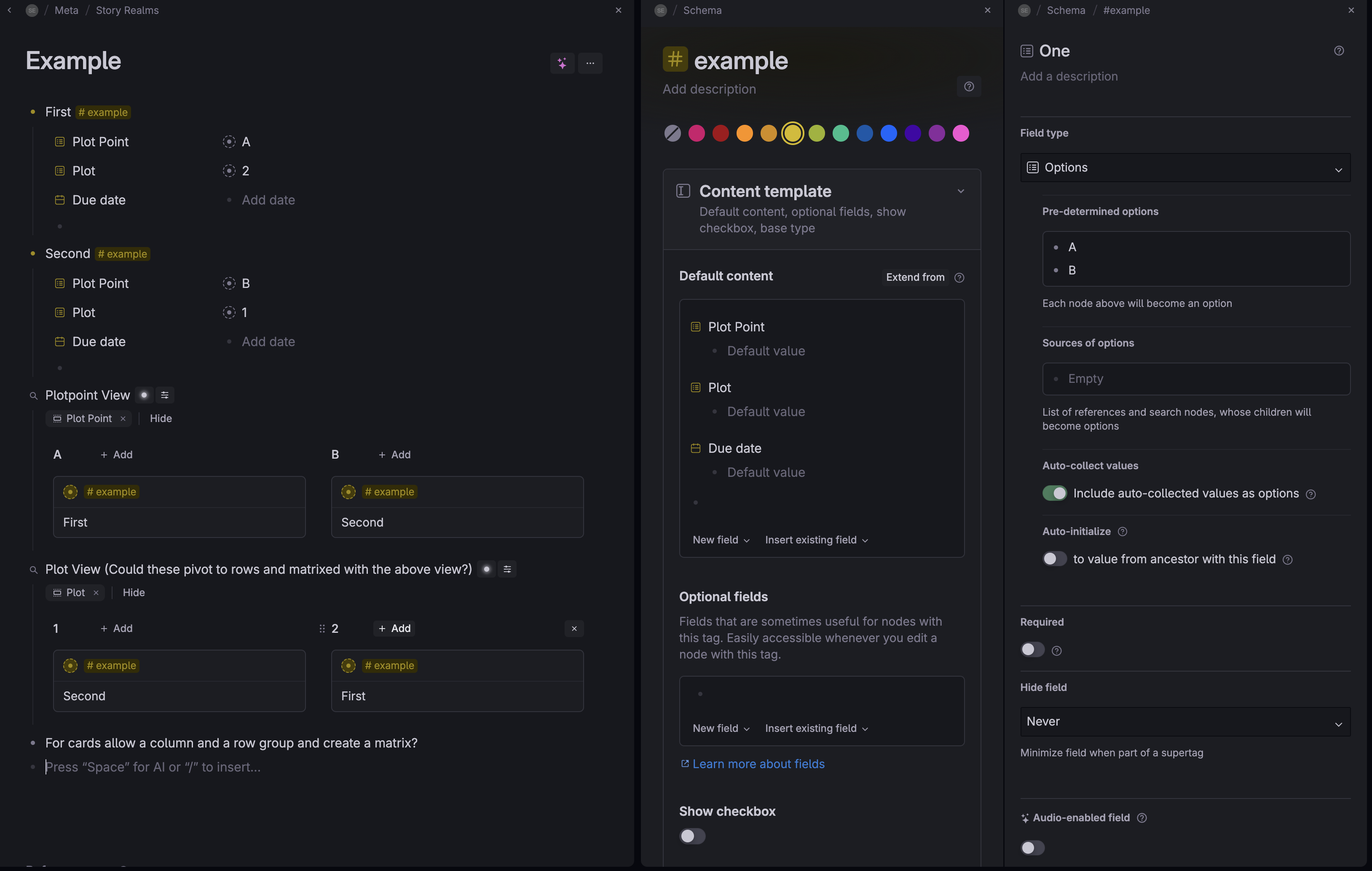Explain the problem as you see it
Given that I am trying to write a novel, when I want to understand whether each of my subplots has a scene for each plot point, I struggle. I end up flip-flopping between two scene kanban boards: one grouped by plot point and one grouped by subplots. Then I have to expand the scenes to check which subplots/plot points they serve. This same pattern shows up for point-of-view characters and character arcs, or between scenes. As in, which scene foreshadows which scenes for which subplot?
Why is this a problem for you?
It is a problem for me, as I have to create a few kanbans, and then I find myself opening up nodes to get to the details of the other field of the scene. This is fine for a dozen scenes, but when I get to a few dozen or well over a hundred scenes, this becomes unwieldy.
It also robs me of oversight. I cannot easily see where the coverage is too thin, too thick. Or, in the case of the foreshadowing, where I am foreshadowing a scene that occurs earlier in the story.
Suggest a solution
When the view is set to card, allow two groupings of different fields. One field for the rows (as per current implementation) and one grouping for rows.
Then we can get a quick overview of the relationship/correlations and move our cards (my scenes) to the matrix cell that reflects the desired field values.
This approach gives overview, ease of editing while in a wider context, and allows for exploration of correlations that might provide new insights about our data.
If supertag information is exposed as Fields, say the tags this tag "extends", than this approach could also address (in part) requests to get a better view at our "tagsonomies".


3 Comments
In actual Kanban boards (for project management) these are known as "swim lanes", and would indeed be a powerful addition to Tana.
Ah, yes, "swimlanes", same term for process flow diagrams depicting systems or responsibilities.
Just hope this makes it in, as it seems such a natural fit for the UX, and offers so much more insight into the graph.
This is much needed for me, in addition to task visualizations (such as a GANTT chart, but not limited to it).